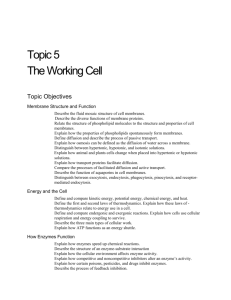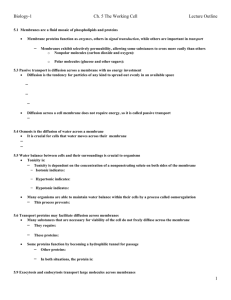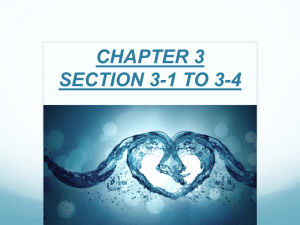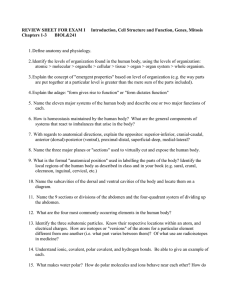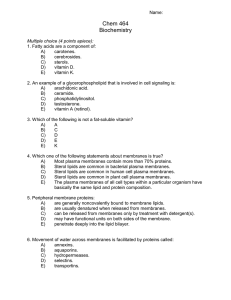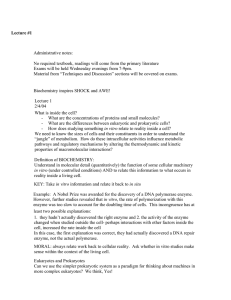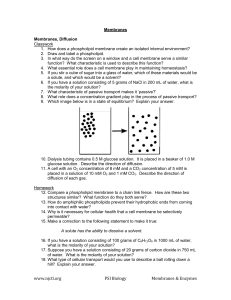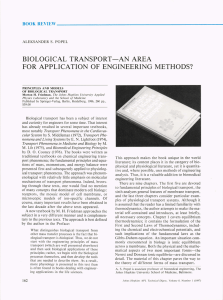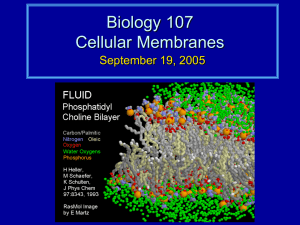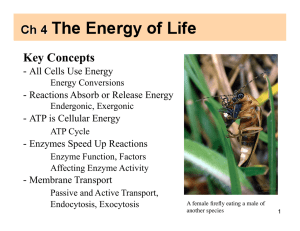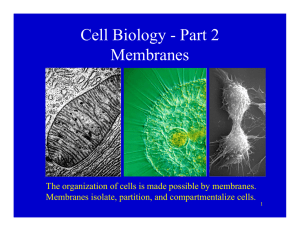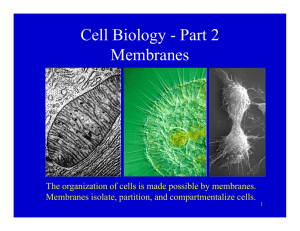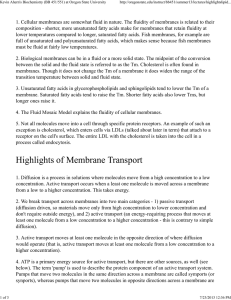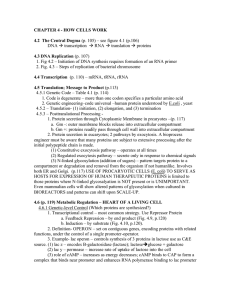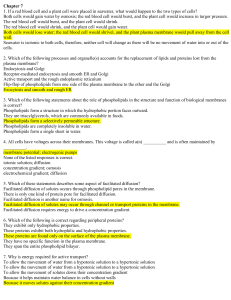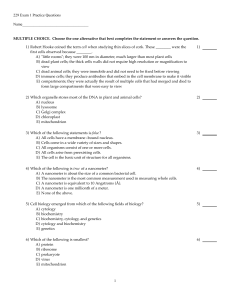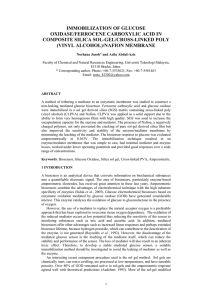9/1/2011 1
advertisement
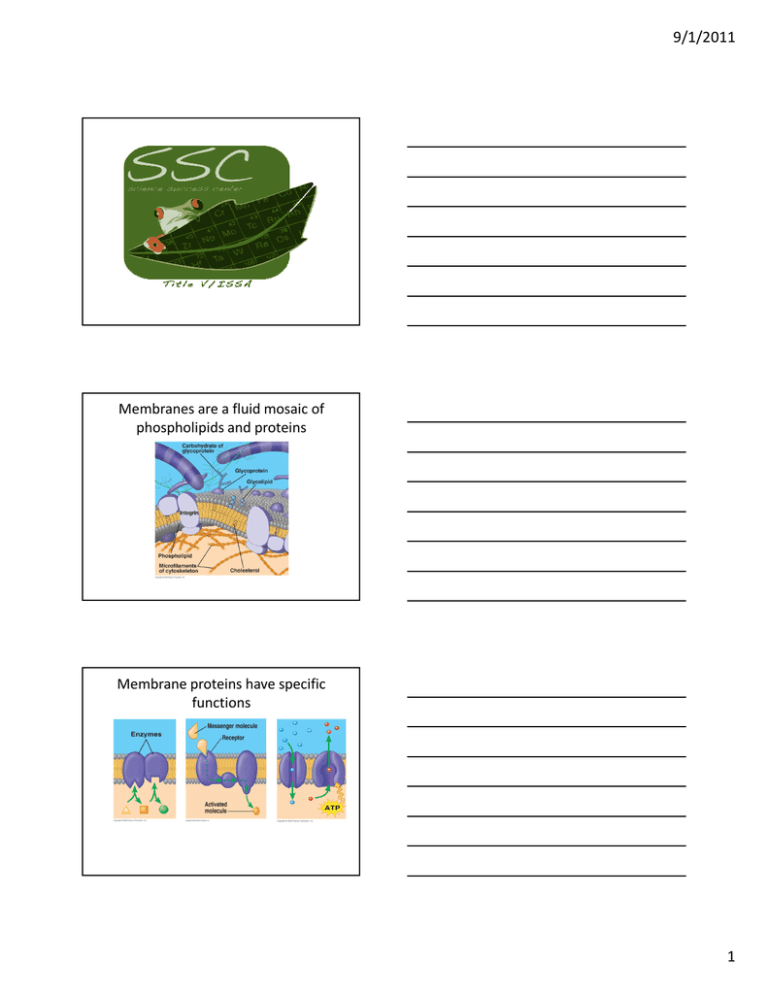
9/1/2011 Membranes are a fluid mosaic of phospholipids and proteins Membrane proteins have specific functions 1 9/1/2011 Membranes form spontaneously, a critical step in the origin of life Passive transport is diffusion across a membrane with no energy investment Osmosis is the diffusion of water across a membrane 2 9/1/2011 Water balance between cells and its surroundings is crucial to organisms Transport proteins may facilitate diffusion across membranes Cells expend energy in the active transport of a solute against its concentration gradient 3 9/1/2011 Exocytosis and endocytosis transport large molecules across membranes Cells transform energy as they perform work 4 9/1/2011 Two laws govern energy transformations • First law of thermodynamics: Energy can be transferred and transformed, but it cannot be created or destroyed. • Second law of thermodynamics: Energy conversions increase the Entropy of the universe. • Entropy: A measure of disorder Chemical reactions either release or store energy Exergonic reaction Endergonic reaction ATP shuttles chemical energy and drives cellular work 5 9/1/2011 ATP powers cellular work Phosphorylation Enzymes speed up the cell’s chemical reactions by lowering energy barriers A specific enzyme catalyzes each cellular reaction 6 9/1/2011 Enzyme inhibitors block enzyme action and can regulate enzyme activity in a cell 7

